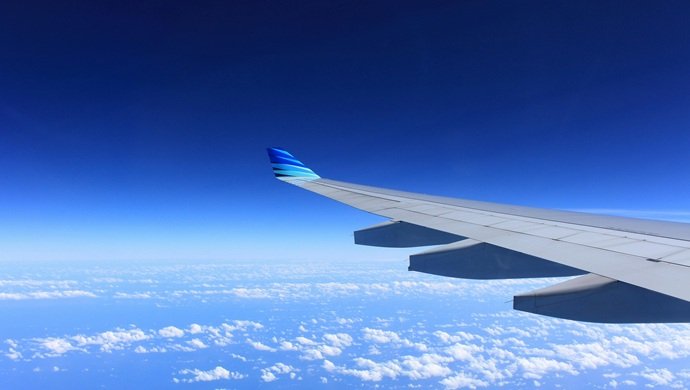Book Instantly - Call Now!
+1-866-829-1247
Kenya Safari Masai Mara: Flights, Wildlife & Travel Insights
Kenya’s Masai Mara is one of Africa’s most iconic safari destinations, drawing travellers from across the world. Famous for its breathtaking landscapes, open grasslands, and endless horizons, the reserve is home to some of nature’s greatest spectacles. The highlight is the Great Migration, where millions of wildebeests and zebras thunder across the Mara River, creating a once-in-a-lifetime sight.
Alongside this, the reserve boasts the legendary Big Five: lion, leopard, elephant, buffalo, and rhino, making every game drive an adventure. Whether you dream of catching a flight into the heart of the reserve, spotting rare wildlife, or exploring local travel secrets, the Masai Mara promises an unforgettable journey.
How to Reach Masai Mara – Flights & Transfers?
Most safaris to the Masai Mara start in Nairobi, with Jomo Kenyatta International Airport (NBO) as the main entry point. Travellers can either fly directly into the Mara or take a road journey. Flights are quick and convenient, while road transfers are longer but more affordable. First-time visitors usually prefer flights for comfort, whereas repeat travellers often enjoy the scenic countryside drive.
Important Travel Pointers:
Flight duration: Approx. 45 minutes from Nairobi.
Local airlines: Safarilink and AirKenya.
Road transfer: 5–6 hours.
Road option: Budget-friendly.
First-timers: flights | Repeat travellers: road trip.
Wildlife Encounters in Masai Mara:
The Masai Mara is one of the most rewarding safari destinations in the world. From the iconic Big Five to the world-famous Great Migration, it offers close encounters with Africa’s most majestic creatures. The diversity of animals and birds makes every game drive unique.
Key Highlights:
Home to the Big Five – lion, leopard, elephant, buffalo, and rhino.
Witness the Great Migration (July–October), where over a million wildebeest and zebras cross the Mara River.
Over 95 mammal species, including cheetahs, hyenas, giraffes, and rare African wild dogs.
Over 450 bird species, including lilac-breasted rollers and secretary birds.
Early morning and evening game drives are best for spotting predators and enjoying golden-hour photography.
Open savannah landscapes ensure excellent visibility and unforgettable sightings.
Whether you are a wildlife enthusiast, photographer, or first-time safari-goer, the Mara promises an adventure like no other.
Also Read: Mauritius Island Travel Guide
Best Time to Visit Masai Mara:
The Masai Mara can be visited all year, but each season has its own charm. Wildlife viewing is excellent, yet the choice depends on whether you prefer dramatic migrations or quieter landscapes.
Seasonal Guide:
Dry season (June–October): Best for spotting wildlife around waterholes.
Great Migration (July–October): Peak season with dramatic river crossings.
Wet season (November–May): Lush greenery, vibrant birdlife, fewer crowds, and better deals.
Packing tip: Light breathable clothes for the day, a jacket for cool evenings.
No matter when you go, the Masai Mara offers unmatched wildlife experiences.
Accommodation Options in Masai Mara:
Your choice of stay can shape your safari experience. From budget camps to luxury lodges, the Masai Mara offers a wide range of accommodation options for all travellers.
Stay Options:
Luxury Lodges: Premium comfort with spacious suites, gourmet dining, infinity pools, and prime reserve locations.
Mid-range Tented Camps: A mix of comfort and adventure, with cosy tents, guided game drives, and authentic safari vibes.
Budget Camps & Guesthouses: Affordable options outside the reserve with easy park access.
All-Inclusive Safari Packages: Cover meals, game drives, and sometimes cultural visits.
Location Choices:
Inside the reserve: More game drive time and immersive wildlife experiences.
Outside the reserve: Lower cost with good accessibility.
From starlit luxury to budget-friendly camping, the Mara has something for everyone.
Also Read: Best Time to Visit Phuket
Travel Insights & Tips
Before heading to the Masai Mara, a little preparation goes a long way in ensuring a comfortable and memorable safari. From entry formalities to health precautions and cultural etiquette, here are some essential tips every traveller should know:
Key Travel Tips for Masai Mara
Visa Requirements: Most visitors need a Kenyan visa, which can be conveniently applied for online through the eVisa portal.
Health Precautions: Carry a yellow fever vaccination certificate, and take malaria prevention measures such as tablets and mosquito repellents.
Smart Packing: Bring light, breathable clothes for the day, a warm jacket for early mornings, sturdy shoes, binoculars, a good camera, and sunscreen.
Cultural Etiquette: When visiting Masai villages, dress modestly, ask permission before taking photos, and show respect for local traditions.
By following these simple yet important tips, you’ll not only enjoy your safari more but also build meaningful connections with the people and environment of the Masai Mara.
Also Read: Fun Things to Do in Seoul
Conclusion:
The Masai Mara is more than just a safari; it’s a once-in-a-lifetime journey into the heart of Africa’s wilderness. From convenient flights and thrilling wildlife encounters to essential travel insights, every detail adds to the magic. Whether it’s witnessing the Great Migration or sharing stories with the Masai people, the Mara promises unforgettable moments. If you’ve been dreaming of an African adventure, now is the time to plan your safari and experience the wild beauty of Kenya.
FAQs about Kenya Safari Masai Mara:
Q. Is it better to book flights to the Masai Mara in advance or at the last minute?
Advance booking is highly recommended, especially during the Great Migration season. Last-minute tickets are often costly and limited.
Q. Can I combine the Masai Mara with other Kenyan safaris?
Yes, many travellers combine the Masai Mara with Amboseli or Lake Nakuru for diverse wildlife experiences.
Q. Are hot-air balloon safaris worth trying in the Masai Mara?
Yes, they offer breathtaking sunrise views of the Mara plains and migrating herds, though they are more expensive.
Q. What type of camera gear is best for a Masai Mara safari?
A DSLR or mirrorless camera with a telephoto lens (200–400mm) works best to capture wildlife from a distance.
Q. How safe is it to travel to the Masai Mara as a solo traveller?
A. Very safe when you book with reputable safari operators. Guided tours ensure security and local support.
Special Discounted Deals On Phone Call Only
